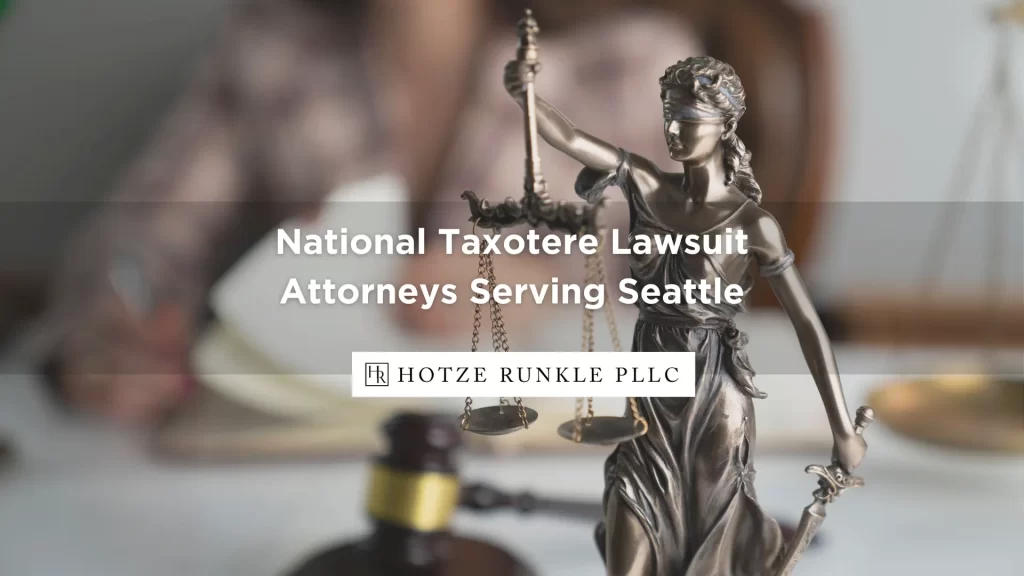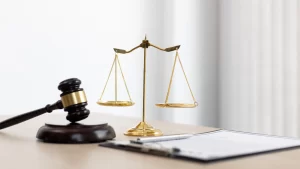
Hotze Runkle PLLC might be able to help you seek compensation if you developed Canalicular Stenosis after Taxotere chemotherapy. The cancer treatment causes a condition with serious, permanent symptoms. The physical and emotional pain you’ve experienced shouldn’t have happened. You thought that you could trust that the chemo drug your doctors prescribed would help, not harm you.
We know you’re under a great deal of stress. You won’t have to go through this alone. Our Taxotere Canalicular Stenosis lawsuit attorneys will help you fight for the justice you deserve.
We’ll build a strong case to hold the pharmaceutical company behind Taxotere accountable. They released a harmful drug without warning consumers of the potential side effects. Their negligent actions resulted in patients using a medicine that they didn’t know could harm them. Take our quiz to see if you qualify.
What Causes Canalicular Stenosis?
Canalicular Stenosis starts with inflammation of the canaliculus. The canaliculus is responsible for funneling tears from the tear ducts into the nasal cavity. When chronic inflammation occurs, obstructions can block tears from draining properly. That results in epiphora, or excessive eye-watering. Without early intervention and treatment to stop symptoms from progressing, the condition could develop into Canalicular Stenosis.
Although excessive eye-watering may sound like a minor nuisance, it creates significant problems for anyone suffering from it. It makes routine tasks, such as driving, more difficult, and disrupts a person’s ability to perform their job or take care of their family. If it progresses and more symptoms develop, it could become permanent.
Medical researchers tried to find the reason Taxotere was causing symptoms of Canalicular Stenosis. After various studies, they discovered that secretions from the chemo drug interact with a patient’s tears as they travel through the tear ducts. That direct contact leads to inflammation of the canaliculus. If the inflammation continues, obstructions form that prevent tears from draining as usual.
Canalicular Stenosis is a permanent medical condition that causes the following symptoms:
- Excessive tearing
- Light sensitivity
- Blurry vision
- Clouded eye lens
- Central vision loss
- Dry eyes
- Swollen eyelids
- Eye infections
Unfortunately, Canalicular Stenosis isn’t reversible. You can try to manage symptoms with surgery, but it’s expensive and invasive. Your doctors may recommend dacryocystorhinostomy (DCR), which is when a surgeon creates a new passageway for tears to drain into the nasal cavity. They use adjacent structures to form the passageway or place a stent over the damaged canaliculus.
The procedure could help alleviate symptoms, but it comes with the following potential risks:
- Tissue damage
- Blindness
- Displaced or migrated stent
- Eye infections
- Uncontrollable hemorrhaging
- Sinusitis
- Significant scars
If a patient doesn’t have eye structures that can form an adequate passageway to redirect tears, another option to manage symptoms is conjunctivodacryocystorhinostomy.
CDCR is similar to DCR but utilizes a Jones tube to facilitate the flow of tears. A Jones tube is a tiny glass tube that can be positioned over the damaged canaliculus. If successful, it could alleviate excessive tearing and other symptoms. However, it presents risks of side effects similar to DCR.
Does Canalicular Stenosis Treatment Affect Chemotherapy?
If you’re managing your Canalicular Stenosis symptoms, you can continue with chemotherapy treatments at a Seattle area hospital like Seattle Cancer Care Alliance. Your ophthalmologist and oncologist will monitor your health and attempt to prevent your symptoms from worsening. If necessary, your doctor will place a temporary stent to redirect your tears around the damaged canaliculus. Usually, around six to eight weeks after chemo ends, your doctor will remove it.
Even though you’re undergoing chemotherapy to treat your cancer, you shouldn’t brush off excessive tearing and other symptoms. Ignoring it could do more harm than good. If you don’t do something about it as soon as you notice any unusual reactions to Taxotere, your condition could progress and become more severe.
Why You Should Hire A Taxotere Canalicular Stenosis Lawsuit Attorney in Seattle
It’s not easy trying to handle a lawsuit alone. Lawsuits are complicated and confusing for people who don’t understand the process. An experienced lawyer can help you with your case. When you hire Hotze Runkle PLLC, we’ll take care of every aspect of your case, so you don’t have to worry about it.
We have the resources to locate crucial evidence that proves you developed Canalicular Stenosis or other adverse symptoms after undergoing Taxotere treatment at a provider like UW Medicine. We use aggressive tactics to hold companies liable for their actions and ensure they pay compensation to injured victims. We will protect your rights and fight for the financial security you deserve.
Who Can I Pursue Compensation From?
Sanofi-Aventis created Taxotere to treat different cancers, such as prostate cancer, lung cancer, neck cancer, breast cancer, and stomach cancer. Oncologists administer it intravenously or orally on a regimen of once a week, every two weeks, or every three weeks. The drug locates cancer cells, shrinks them, and prevents them from spreading.
Despite its proven success at treating cancer, patients and survivors noticed side effects their doctors didn’t warn them about. Allegedly, Sanofi knew about the dangers of their chemo drug but failed to notify the U.S. Food and Drug Administration (FDA). It wasn’t until 2014 that they released warning labels about the risk of Canalicular Stenosis and other related symptoms.
Failing to warn drug users of the harmful side effects they could experience is a form of negligence. If you choose to file a lawsuit against Sanofi and base your case on negligence, your lawyer must prove the following five elements existed:
- Duty: The manufacturer owed you a legal duty of care to act or not act in a way that a reasonable person would under similar circumstances;
- Breach of duty: They breached their duty;
- Cause in fact: If it wasn’t for their actions, you wouldn’t have developed symptoms;
- Proximate cause: Their breach of duty was the direct cause of your symptoms; and
- Damages: You incurred damages due to your symptoms.
Every state has statutes of limitations for specific personal injury cases. A statute of limitations is a strict deadline that injured individuals must follow if they want to sue another party for negligence. In Washington, you have to file a lawsuit against Sanofi within three years from your injury to pursue compensation. If three years pass, you’ll lose your right to legal action against the drug company.
Can I File a Lawsuit Against My Doctor?
There’s a good chance your doctor had no idea that Taxotere could cause the symptoms you’re experiencing. Most physicians weren’t aware of the dangers while administering the drug to their patients. If you pursue compensation from your doctor or the hospital where you receive your chemo treatment, you probably won’t find strong evidence that your doctor was at fault. At Hotze Runkle PLLC, we want to hold the company behind Taxotere responsible for their negligence, not your doctor.
Your Total Damages Will Determine Your Case’s Value
 Hotze Runkle PLLC will consider all your damages to determine a full and fair amount to demand from the liable party. Damages are losses an injured person suffers because of an accident or injury. There are two types of damages you could seek compensation for: economic and non-economic. Economic damages are expenses, while non-economic damages are intangible losses.
Hotze Runkle PLLC will consider all your damages to determine a full and fair amount to demand from the liable party. Damages are losses an injured person suffers because of an accident or injury. There are two types of damages you could seek compensation for: economic and non-economic. Economic damages are expenses, while non-economic damages are intangible losses.
The damages you could potentially recover in a lawsuit include:
- Past and future medical costs
- Lost wages
- Lost earning capacity
- Emotional distress
- Pain and suffering
- Mental anguish
- Permanent disability
- Loss of quality of life
The third type of damage is known as punitive damages. Instead of compensating you for your losses, it’s a punishment against the at-fault party for their actions. It’s a rare financial award given in court, but it’s possible you could receive punitive damages if the jury finds that Sanofi was particularly negligent or reckless.
Economic damages are easy to calculate because they come with a billing statement, invoice, or another document that lists the monetary amount. Non-economic damages are more difficult to quantify because there isn’t a numerical value placed on pain and suffering. Your lawyer will review the following factors to determine how much they think you deserve for your non-economic damages:
- Your symptoms and how serious they are
- If you recovered or ended up with a permanent impairment or disability
- Future medical care needed because of your injury
- Length of required treatment for your Canalicular Stenosis
- Invasiveness of necessary surgical procedures
- Total economic damages
- The suffering endured as a result of the diagnosis
- Impact on your quality of life
Certain details of your case could increase or decrease its value. If Canalicular Stenosis left you with a physical impairment, such as blurry vision that prevents you from working, you’ll likely receive a higher financial settlement or judgment than if you make a full recovery.
Contact Us
We know you’re angry and stressed. It’s an overwhelming feeling knowing a company you trusted lied to you about their product, and you suffered because of it. At Hotze Runkle PLLC, it’s our goal to ensure negligent pharmaceutical companies like Sanofi suffer the consequences of their actions. You shouldn’t pay for the mistakes they made.
Our Taxotere Canalicular Stenosis lawsuit attorneys are ready to help you fight for the financial damages you’re owed. Our experienced team of professionals will work diligently to build your case and prove you deserve compensation. You won’t be alone throughout the legal process because we’ll be by your side from beginning to end.
If you were on a Taxotere regimen and developed Canalicular Stenosis, find out if you’re eligible for a lawsuit by taking our quiz.